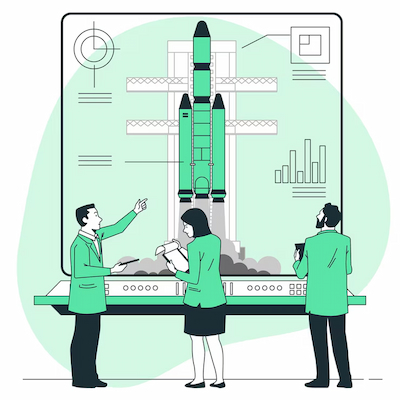
Gravity is one of the fundamental forces that govern the universe, influencing everything from the fall of an apple to the movement of galaxies. Testing gravity on cosmological scales is a fascinating topic that involves understanding how this force behaves over vast distances and under extreme conditions. Through experiments and observations, scientists aim to unravel the mysteries surrounding gravity, particularly its interaction with dark matter and dark energy, which make up the majority of the universe.
In recent years, technological advances have allowed for more precise and comprehensive tests of gravity at cosmological scales. These tests not only help confirm existing theories but may also lead to new discoveries that challenge our current understanding of physics. With the use of powerful telescopes and space probes, researchers are getting closer to understanding how gravity behaves on scales beyond our everyday experience.
How Tests of Gravity on Cosmological Scales Work
Tests of gravity on cosmological scales are mainly conducted through the observation of astronomical phenomena and mathematical analysis of the forces involved. One of the most common methods is studying the motion of galaxies and galaxy clusters. By observing how these celestial bodies move and interact, scientists can infer the presence of unseen mass, such as dark matter. This type of test is essential for validating Einstein’s general theory of relativity, which describes gravity as the curvature of space-time.
In addition, light that passes near massive objects is affected by gravity, a phenomenon known as gravitational lensing. This effect is used to study the mass distribution in galaxies and clusters, allowing astronomers to map dark matter. Gravitational lensing tests are extremely valuable because they provide insights into the structure of the universe on scales that cannot be observed directly.
Another important method is the observation of gravitational waves, which are ripples in space-time caused by cosmic events such as black hole mergers. The detection of these waves, carried out by experiments like LIGO, not only confirms predictions of general relativity but also opens new possibilities for studying gravity on cosmic scales. Gravitational waves provide a new way to observe the universe, enabling scientists to investigate previously invisible phenomena.
Finally, computer simulation plays a crucial role in understanding gravity on cosmological scales. Researchers use mathematical models and simulations on supercomputers to predict how gravity should behave in different scenarios. These simulations are compared with observational data to validate theories and refine models, leading to a deeper understanding of the universe’s dynamics.

Advantages of Testing Gravity on Cosmological Scales
Testing gravity on cosmological scales offers several advantages beyond mere scientific curiosity. One major benefit is the validation of existing physical theories, such as Einstein’s general relativity. By confirming these theories on larger scales, scientists can have greater confidence in their predictions and their applicability to cosmic phenomena.
Furthermore, these tests help identify the presence of dark matter and dark energy, two fundamental components of the universe that remain poorly understood. By mapping dark matter distribution through gravitational lensing and observing dark energy’s effects on the universe’s expansion, researchers can develop more robust theories about the cosmos’s composition.
Another significant advantage is gaining a better understanding of the formation and evolution of cosmic structures. Gravity plays a crucial role in the formation of galaxies, stars, and planets. By studying gravity on larger scales, scientists can gain insights into the history of the universe and the processes that led to its current structure.
Lastly, testing gravity on cosmological scales drives technological innovation and the development of new scientific instruments. The pursuit of answers about gravity fosters the creation of more powerful telescopes, gravitational wave detectors, and data analysis techniques, which can have applications in other scientific and technological areas.
How to Perform Tests of Gravity on Cosmological Scales
Testing gravity on cosmological scales involves several stages and complementary techniques. First, data collection is essential for any experiment. This can include observing distant galaxies, measuring their velocities, and analyzing the light that passes near massive objects. Data collection is performed using advanced telescopes and space probes that capture information across various wavelengths.
Next, analyzing the collected data is crucial. Scientists use statistical and computational methods to interpret the data and extract meaningful insights. This involves using specialized software to simulate different scenarios and test hypotheses about gravity and its interaction with dark matter and dark energy.
Another important step is comparing the results with theoretical predictions. Mathematical models that describe gravity must be tested against observational data. This comparison can lead to refinements in existing models or even the development of new theories that better explain observed phenomena.
Lastly, collaboration among scientists from different fields is essential for successful tests of gravity on cosmological scales. Physics, astronomy, mathematics, and engineering come together to tackle the complex challenges involved. This multidisciplinary collaboration is key to advancing our understanding of gravity and its implications in the universe.
Future Perspectives of Testing Gravity on Cosmological Scales
As observational techniques and simulation tools continue to improve, the future of testing gravity on cosmological scales looks promising. Upcoming space missions and next-generation telescopes, such as the Euclid Space Telescope and the Vera C. Rubin Observatory, will provide unprecedented data on the large-scale structure of the universe and the behavior of gravity over vast distances.
Moreover, the continued detection and analysis of gravitational waves will offer new insights into extreme cosmic events and provide independent tests of general relativity. These observations could reveal deviations from current theories, pointing toward new physics.
In parallel, theoretical physics is exploring alternative models of gravity, such as modified gravity theories and quantum gravity frameworks. Testing these models requires high-precision data and innovative analytical methods, which are being developed through international collaborations.
Ultimately, the combination of observation, theory, and technology will deepen our understanding of gravity and may even lead to a paradigm shift in our view of the cosmos.
Applications Beyond Cosmology
While testing gravity on cosmological scales primarily aims to understand the universe, its methods and discoveries have important applications beyond cosmology itself. The development of advanced instruments, data analysis techniques, and theoretical models contributes to a variety of scientific and technological fields.
One notable example is the improvement of sensor and imaging technologies. The high-precision instruments developed for observing gravitational lensing or detecting gravitational waves can be adapted for use in medical imaging, geophysics, and environmental monitoring. Techniques used to reduce noise and enhance signal sensitivity in astronomical observations are also being repurposed in these areas.
Moreover, the mathematical and computational tools created to simulate cosmic structures and analyze large datasets are applicable in other domains, such as climate science, finance, and artificial intelligence. Handling massive and complex datasets—common in cosmological studies—provides valuable experience in managing and interpreting big data in a variety of fields.
Additionally, the collaborative, international nature of gravitational research fosters innovation through shared knowledge and interdisciplinary partnerships. These networks not only accelerate scientific progress but also train new generations of scientists and engineers equipped with cutting-edge skills.
In essence, while the motivation may be to explore the cosmos, the ripple effects of testing gravity on cosmological scales enrich a wide spectrum of human knowledge and capability.

Did You Enjoy Learning About Testing Gravity on Cosmological Scales?
Testing gravity on cosmological scales is a fascinating journey that reveals the universe’s mysteries. Understanding how gravity operates over vast distances not only validates existing theories but also opens the door to new discoveries.
If you’re interested in learning more about this intriguing topic, keep following the latest research and scientific developments. Gravity still holds many secrets, and each new discovery could change our understanding of the cosmos.
Frequently Asked Questions
What is “testing gravity on cosmological scales”?
Testing gravity on cosmological scales means observing how gravity acts over large distances. This includes stars, galaxies, and even the entire universe.
Why is it important to test gravity on such large scales?
It is important because gravity affects everything in the universe. This helps us understand how things move and interact on a large scale.
How do scientists test gravity on cosmological scales?
Scientists use telescopes and special equipment. They also look at light and radio waves from stars and galaxies.

